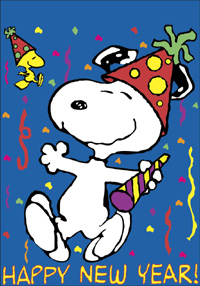Literacy
Reading: Questioning
and Inferring
We have been focusing on the
strategy of questioning. Your reader
will understand that good readers ask questions before, during, and after they
are reading and that some questions will not have answers provided within the
text. We will also work on the
structure of writing a paragraph and what the main components of a paragraph
are.
We will then
be transferring into the strategy of Inferring. Inferring is a strategy
that involves reading between the lines. Students will know that a good
inference comes when you use your background knowledge and text clues to make
an educated inference. (BK + TC= I) When students infer, you might hear
language like, “I think that…because…” “My clues from the text are…”
or “Maybe it means…because…” Third graders will practice creating, confirming
and revising reasonable predictions when reading. Students will also have to
think about why authors write different texts, for example, to
inform or persuade. Additionally, they will begin to communicate inferences
about plot, setting, character and problem/solution before, during and after
reading. Finally, students will attempt to determine the meaning of words and
phrases as they are used in a text, distinguishing literal from figurative
language.
Writing:
Informational Writing
Informational writing has been a fun way for
students to express what they are interested in, and how they are experts at
many different topics. Students should include:
·
An interesting beginning that sets the context for a
topic.
·
Have organizational structure that has a clear focus
throughout the piece of writing.
·
Students will include details and explanations that
will help the reader understand their ideas clearly.
·
Communicate big ideas, insights, possibly statistics
and teach the reader new information by using multiple non-fiction elements.
·
Use diagrams, charts or illustrations which are
appropriate and that support the text.
·
Have a conclusion or ending section that is logical
·
Include a glossary of related terms if needed to
explain expert words used.
Math:
Visual Displays are
used to Describe Data
What can data tell you about your class or school? How does
data displays help us understand information? These are a few guiding questions
that are helping our student think about why data collection and data
representation are important mathematical strategies. In our current unit,
students have started to collect, represent, describe, categorize, and
interpret both categorical and numerical data. They are using the 21st
century skill of Problem Solving by reasoning abstractly and quantitatively to
analyze data and generate solutions. They have already begun the important work
of seeing a data set as a whole as they design and carry out their own data
investigations, create representations of the data collected, and compare and
discuss these representations. By the end of this unit, students will be able
to draw scaled picture graphs and scaled bar graphs to represent a data set
with several categories. Additionally, students will solve one- and two-step
“how many more” and “how many less” problems using information presented in
scaled bar graphs.
Number Sense and Measurement
Later in this unit students will work
on students’ collections of numerical data that includes measuring length in
inches and feet. Students will review the basic units of inches, feet, and
yards and their relationships by
measuring lengths longer than one foot. Students practice and refine their
strategies for solving addition problems with three-digit numbers and
subtraction problems with two- and three-digit numbers. In addition to solving
removal problems, they expand their understanding of subtraction as they solve
comparison problems and problems in which they find the missing part of a
whole. They will increase their understanding of place-value as they extend
their work into three-digit numbers up to 1,000 and study the structure of 1,000.
Social Studies: Civics
Third
grade students have learned that in our civics unit, citizens
respect
the views and rights of others as components of a democratic
society.
They studied the origin, structure, and basic function of
governments.
We will continue to build off of this throughout the year
when
we hit other social studies units.
|
Science: Matter
Throughout every science unit, all third graders are using
critical thinking to demonstrate the process of inquiry. By experimenting,
reading articles, discussing and reflecting.. Students will learn the
scientific process and how that is essential with their new learning with
identifying the states of different types of matter. Through Foss
Investigations, videos, literature and class activities, students will discuss
different attributes of solids, liquids, gases and plasma while using evidence
to develop a scientific explanation around how heating and cooling affects
states of matter. Our grade-level science day later in the year will allow
students to practice analyze, interpret and write observations about matter as
it freezes and melts, and boils and condenses.




